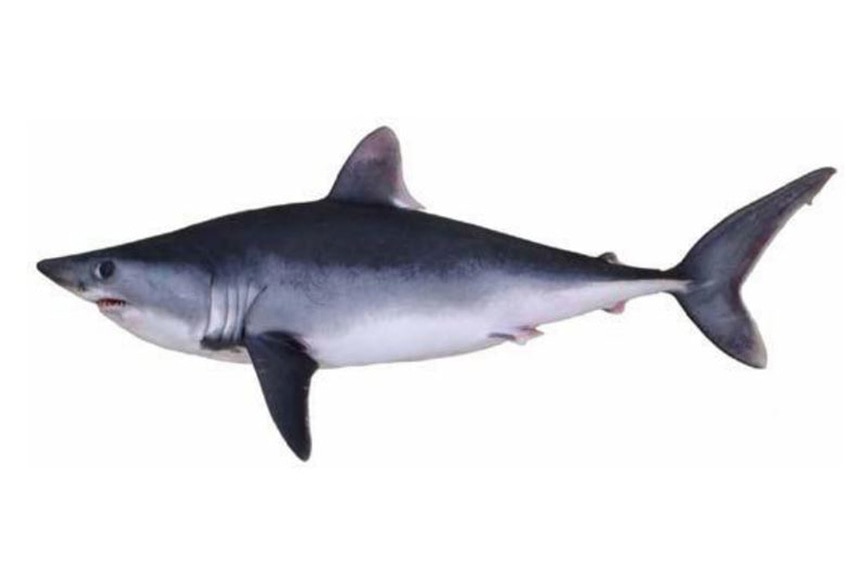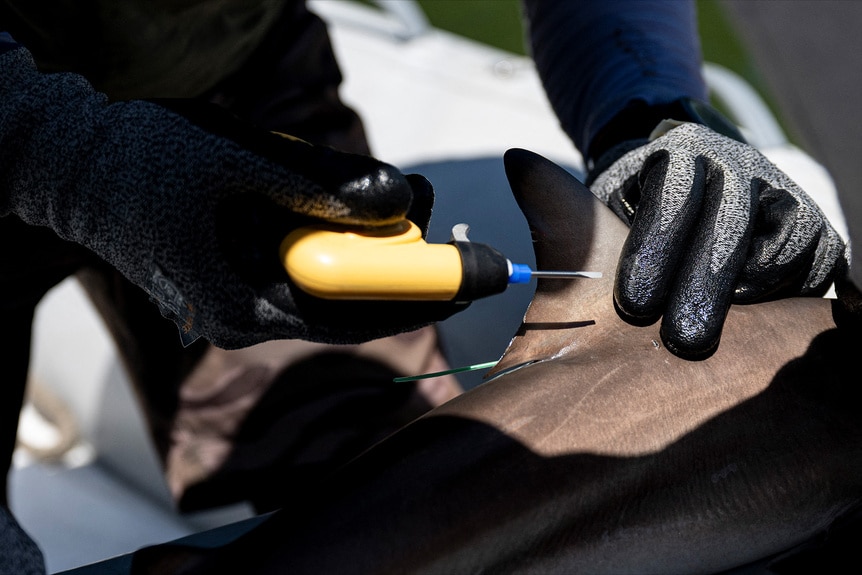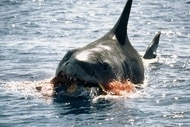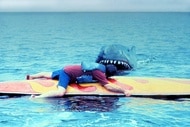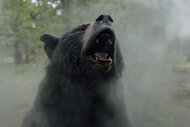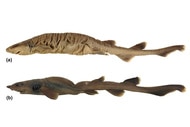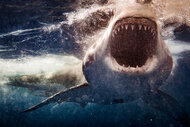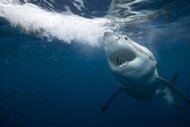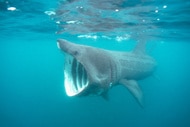Create a free profile to get unlimited access to exclusive videos, sweepstakes, and more!
Mystery Creature Eats 8-Foot Research Shark. Was It Jaws?
What do 8-foot sharks have to fear? Bigger sharks.
Sharks, especially medium to large ones, are typically considered apex predators, at the top of their respective food chains. But as the late, great Qui-Gon Jinn famously said, there’s always a bigger fish. Recently, a team of researchers collected evidence of an 8-foot adult shark being eaten by an unseen predator several thousand feet beneath the ocean’s surface. The grizzly story was published in the journal Frontiers in Marine Science.
Researchers were studying pregnant porbeagle sharks when one of the tagged sharks started sending back data that didn’t make sense, until they figured out it had been eaten. It’s the first ever evidence of predation on porbeagle sharks and helps scientists to better understand the pressures the species is under. Based on the data from sensors attached to the shark, researchers believe it was eaten by an even larger shark, probably a mako or Jaws herself, the great white shark.
Sensor data reveals 8-foot adult shark being eaten by an unseen predator
Porbeagle sharks frequent cooler waters and have two main populations, one in the Northwest Atlantic and one in the Southern Hemisphere. The species is considered endangered in parts of its northern range, largely as a result of overfishing. They have relatively long lifespans, reaching maturity at age 8 and 13 for males and females, respectively. Pregnant females have an eight to nine-month gestation period and typically deliver three or four pups. Their relatively slow rates of reproduction make them susceptible to overfishing and slow to recover from population loss.
Some populations have declined as much as 90% from their initial background rate. Recovery is expected to take decades. The good news is that the National Marine Fisheries Service considers their risk of extinction to be low and their long term prognosis to be good, based on current protection efforts and rates of recovery. In the meantime, researchers are monitoring the species to keep tabs on its progress.
Sharks were caught off the coast of Cape Cod in October of 2020 and 2022. Each shark spent about 15 minutes aboard a research vessel, fitted with a saltwater pump which allowed them to breathe. Individuals were examined for signs of pregnancy with a portable ultrasound and tagged.
The sharks were tagged with two different sensors, a finmount tag which provides geolocation data anytime the dorsal fin comes out of the water, and a pop-off satellite archival tag (PSAT) which tracks temperature and depth. Because the PSAT is outside the shark’s body, it records the ambient temperature and pressure of the surrounding water and helps scientists orient a shark in three dimensions.
For the first couple of months after its capture and tagging, the shark spent most of its time between the ocean’s surface and about 100 meters (328 feet) down. Over the winter, from December to March, it spent its nights between 100 and 200 meters (328 and 656 feet) and its days diving as deep as 600 to 800 meters (1,968 and 2,625 feet). It had moved off of the continental shelf and into deeper waters. In the days leading up to its apparent death, the average recorded temperatures were between 16 and 19 Celsius (61 and 66 Fahrenheit), then they jumped suddenly to an average of 22 Celsius (72 Fahrenheit).
Lamniform sharks, a group which includes the porbeagle, the mako, and the great white, are moderately endothermic (warm-blooded), allowing them to more efficiently operate in cold waters. The sudden jump in temperature reading from the PSAT sensor suggests it had been eaten and was now inside the body of a predator. The temperature is too low to be the inside of a whale or other marine mammal, whose body temperatures are considerably warmer, but it’s just about right for the inside of a great white.
We can enact legislation, fish more responsibly, and get humanity out of the porbeagle’s way, but we can’t protect it from its natural predators. Even Jaws has to eat.
Watch Steven Spielberg’s Jaws, now available from Universal Pictures.




